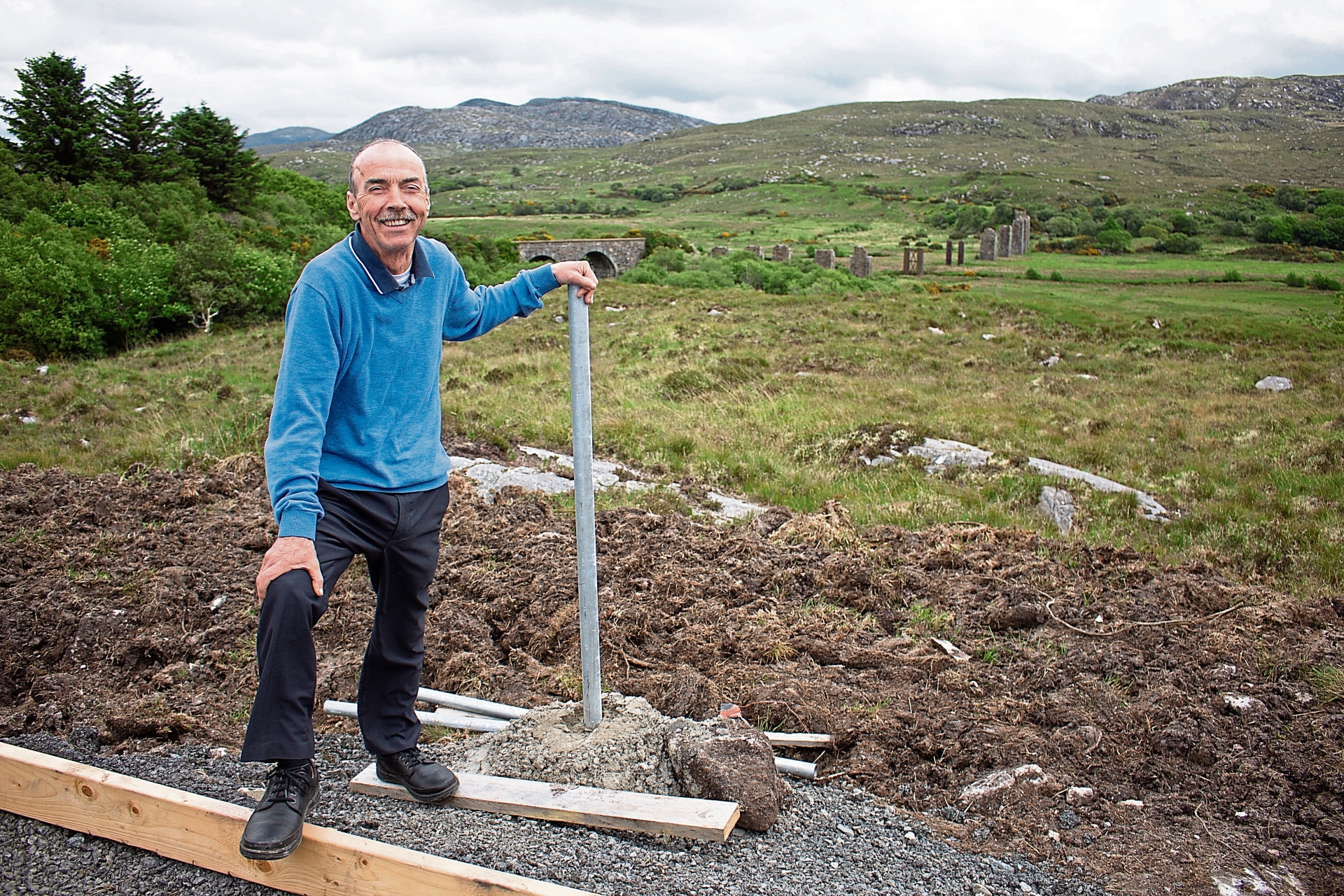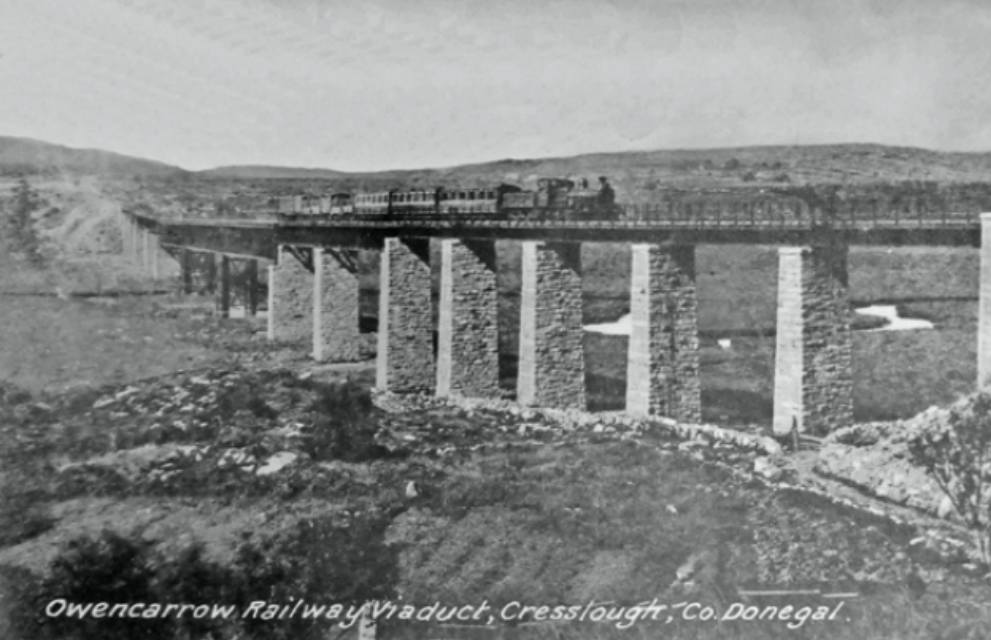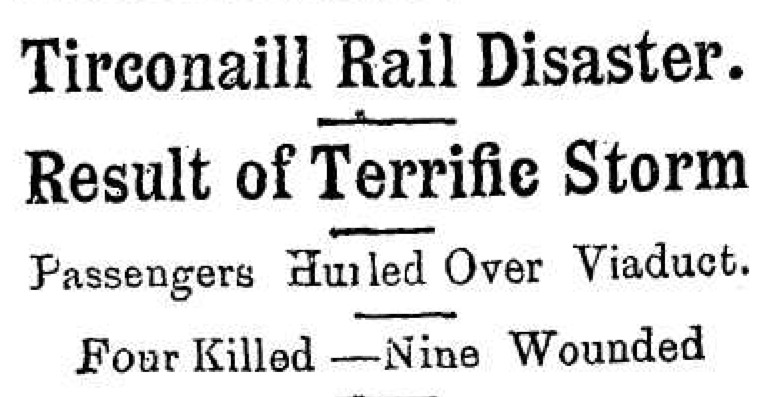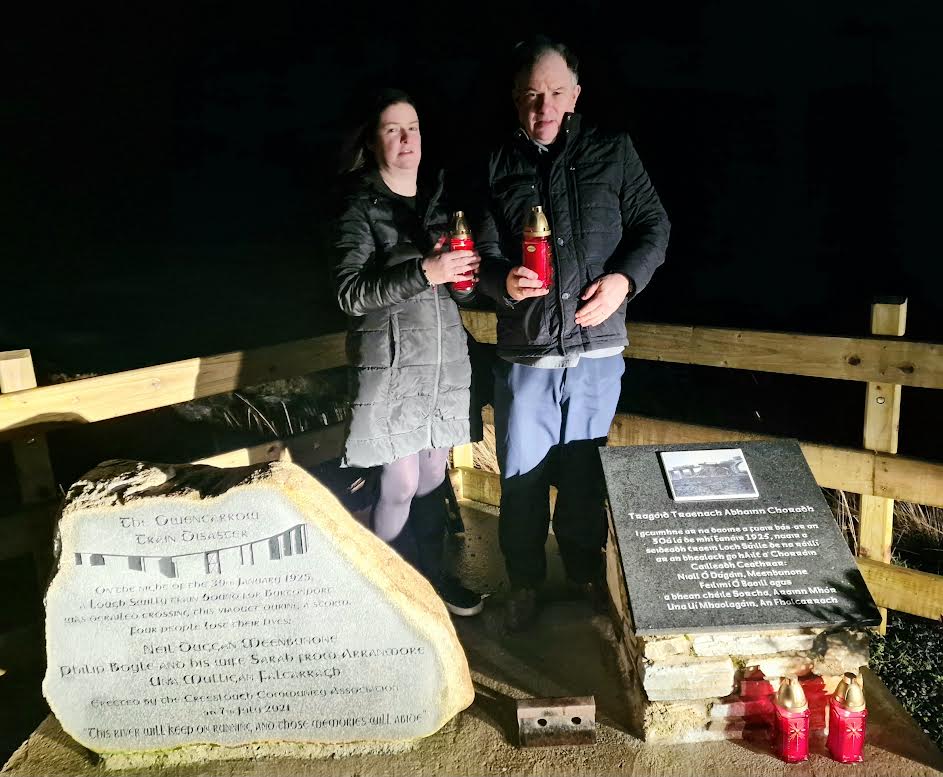
The scene following the Owencarrow Viaduct Disaster in January 1925
The voluntary Owencarrow Viaduct Committee - working in association with the Creeslough Community Association - will commemorate the 100th anniversary of the Owencarrow Viaduct Railway Tragedy this Thursday.
Buses will be departing from St Michael’s chapel at 11:15am for the 12 noon commemoration, which will feature speeches, a blessing of honour in memory of those who were lost, a guided tour of the site of the disaster with details information boards along the path and a reception back at the Community Links Hub on Creeslough’s Main Street.
The special event marks the 100th anniversary of the Owencarrow Railway disaster, which took place on January 30, 1925. The late Ben McFadden, pictured below, who passed away in 2022, was one of the driving forces behind the plans to mark the 100th anniversary of the tragic event.
The Creeslough Community Association said: “This is a significant chapter in the community’s history and the centenary event offers us a moment to reflect, honour the victims and remember the resilience of those who were affected.”
The Owencarrow Disaster of 1925
Four people lost their lives and nine were injured in an accident on the Letterkenny and Burtonport Extension Railway during a gale last on January 30, 1925.
Those who were killed were Philip Boyle and his wife Sarah from Leabgarrow, Arranmore, who was the only one of the four who died in Letterkenny Hospital, with all others passing at the scene.
Neil Duggan was a widower from Meenabunone and left four children as he died just 200 metres from his home and Una Mulligan, 48, Falcarragh, who also had four children and had been seeing her daughter at Inch Island.

Philip Boyle was 55 years old and had married Sarah Gallagher on June 11, 1896. They had travelled to Letterkenny to bring their son Michael home to Arranmore from hospital. Tragedy would hit the same family a decade later when Sarah's younger brother, Edward Gallagher, died along with six of his children in the Arranmore boating tragedy in 1935, where 19 in all lost their lives coming from Burtonport.
Michael Boyle - son of Philip and Sarah - was treated for shock, while the other injured parties were Mrs Brennan, Dungloe, who had severe injuries to her head; Mrs McFadden, sister-in-law of Mrs Brennan and a Mrs Bella McFadden from Gweedore - both of whom had shock; Edward McFadden from Magheraroarty had shock and a wounded hand, while Denis McFadden, Cashel, Creeslough suffered severe concussion.
The crew of the train was made up of Neil Boyle, train guard; Bob McGuinness, engine driver, 13 years experience on the Burtonport Extension line, and Con Hannigan, fireman.
“The train left Derry for Burtonport with 14 passengers at 5:15 o'clock in the evening,” The Donegal Democrat reported on Friday, February 5, 1925. “It consisted of an engine, waggon third-class coaches composite coach, and a guard's van. It reached Letterkenny safely and started on the fifty-mile run to Burtonport at seven o'clock.
“A gale, blowing at the rate of fifty miles an hour, increased in violence as the train sped on its way. All went well, however, till the train was on the viaduct that spans a bleak mountain defile and the Owencarrow River, near Barnes's Gap and Creeslough.
“The viaduct is from 400 to 440 yards in length. The train was crossing it slowly when a terrific gust swept up the valley. It lifted two of the big coaches from the rails, tossed them about like chaff, and flung them top downwards on the parapet.

“The roofs were smashed to matchwood, and by the violence of the impact the passengers were hurled from the carriages into the valley below. The masonry of the parapet gave way beneath the shock and stress, and masses of it thundered down upon the injured passengers. But despite the sudden strain, the couplings held, and the upturned coaches lay poised across the parapet, threatening to fail at any moment on the wounded. The engine kept the rails, and thus the train itself was saved.”
“Of the 14 passengers, only one was unhurt - a Miss Campbell, who was flung from the upturned carriage, then deflected from the course followed by the other falling passengers, landing on soft and boggy soil, sinking knee-deep into it. In struggling to free herself, she left her shoes embedded in the soil and had to walk home in her stockings.”
Firemen hurried from Creelsough, from which news was telegraphed to the company’s headquarters in Derry. A relief train was sent at 11pm to the viaduct, arriving at 2:30am. Rev Father Burns, CC, Doe and Rev Father Doherty from Letterkenny were on the scene attending to the wounded.
Donegal Genealogy says of the aftermath: “The inquest on Philip Boyle and Una Mulligan was opened Saturday, 31 January, by the Coroner, Dr JP McGinley, at the licensed premises of Mr Bradley, Falcarragh. Dr McGinley also opened an inquest on Neil Duggan at his residence in Meenbunone.
“The inquest on Mrs Boyle was held by the Deputy Coroner for East Donegal, Dr Walker, at Letterkenny Workhouse. The proceedings consisted of the formal identification of those killed in the train crash. The inquest was then adjourned until the following Friday, 6 February, at Creeslough.
“At the conclusion of the inquest, the jury found that death in every case was due to the injuries received. They added, as a rider, their unanimous opinion that if a properly constructed rail had been carried along the whole length of the viaduct, from cutting to cutting, and without an intervening gap, no lives would have been lost. They were also of the opinion that the driver, fireman, and guard were not in any way to blame.
READ NEXT: The Evelyn Marie, 50 years on: Forever loved, forever missed, forever in our hearts
“James McFadden, Kilfad, and Pat McFadden, Terlin, saw their bravery was recognised at the inquest, for rescuing two women from a carriage hanging over the edge of the viaduct.”
In the February 1963 edition of The Railway Magazine, there was a letter from L. Hudlass which said: “When the line was in operation a wind velocity of 60mph meant the exclusion of open wagons from the train, while a wind speed of 80mph caused the suspension of all traffic. The breach in the viaduct parapet was still visible in 1949.”
Walking Donegal looks at the event through the eyes of fireman John Hannigan who was on the footplate that day. In a 1984 interview, when he was 85, he said he remembered “vividly the events of the night, the passing years had not erased the memory of the harrowing scenes or stilled the sound of the screams of agony. He still re-lived the feeling of hopelessness he endured as he surveyed the scene of desolation in the fleeting moments, oblivious to his own danger, he scrambled over the wreck-strewn terrain to run the two odd miles to Creeslough to raise the alarm.”
“The accident on the Owencarrow Viaduct was the worst disaster to befall the Londonderry and Lough Swilly Railway but it was by no means the only incident to happen to the railway during its time of operation on the line,” the Workhouse, Dunfanaghy, shared in 2022. “On Christmas morning in 1922, another trip from Derry had almost led to loss of life in the locality.
“A train left Derry that morning and made its way through a storm towards Burtonport. Nearing Dunfanaghy Road station where the line crossed an embankment, the coach next to the engine was lifted completely off the tracks by the wind and the couplings snapped. The coach toppled over and crashed down the steep embankment.
“The only occupant was a boy who was able to crawl out of the wreckage. The second coach which contained five or six passengers was toppled over also but was held from tumbling down the embankment by a wall. Luckily, none of the passengers was injured.
“On 7 February 1923, the 8:30am train was making its way from Burtonport and near the 6814-mile post at Cruckakeehan, between Kincasslagh Road and Crolly, as it was about to enter the cutting beside Owen Sharkey’s house, a gust of wind lifted two carriages and a bogey wagon off the line and dropped them sideways down the bank. Only the engine, driven by James Deeney, and the third brake van were left on the line.
“The frightened passengers gathered together in the brake van before being taken into Sharkey’s house where they were comforted and given tea. Deeney took the engine and travelled to Crolly for help. When he returned, the brake van was also off the line. In the weeks that followed the wreckage was set on fire and destroyed.
“There were also numerous accidents with livestock on the line and on the morning of 10th September 1922 during the Civil War, a party of irregulars tore up the railway line at Loughagher between Creeslough and Dunfanaghy. The Ganger was threatened and told not to repair the line but it was repaired and trains were soon running again.”

Cathy Doyle and Michael Doyle, great-granddaughter and great-grandson of Neil Duggan one of the victims of the Owencarrow viaduct crash mark the 98th anniversary of the tragedy at a ceremony near the site in 2023
In July of 2021, a new memorial was erected at the site by the Creeslough Development Association and the memorial representing the families of those who died and whose grandfather was killed in the tragedy.
Subscribe or register today to discover more from DonegalLive.ie
Buy the e-paper of the Donegal Democrat, Donegal People's Press, Donegal Post and Inish Times here for instant access to Donegal's premier news titles.
Keep up with the latest news from Donegal with our daily newsletter featuring the most important stories of the day delivered to your inbox every evening at 5pm.